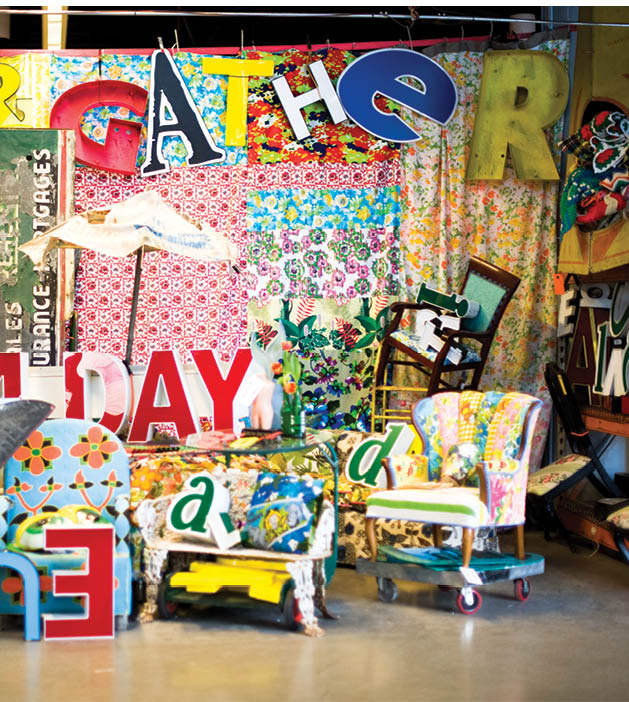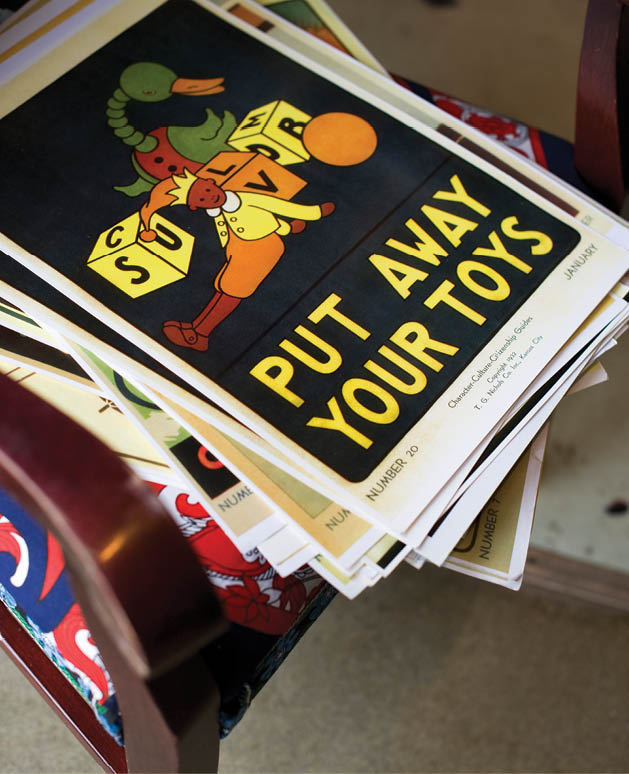There’s a familiar energy in the air this day at Shakopee’s Canterbury Park: anticipation. Eagerness to get out of the gate. Eyes trained on the start. The venue, best known for its horseracing events, prepares to open its doors to a growing breed of shoppers—devotees of Junk Bonanza, a biannual mega-sale with 150 vendors that cater to a wide variety of antiquers, junkers and flea-market lovers’ tastes and inclinations, no matter how … peculiar.
Hours before the sale opens, shoppers begin to queue up, some with empty rolling carts and shopping totes that will depart the sale teeming with decorative dreams come true. Others have parked their “shopping bags” in the lot—trucks and trailers stand at the ready for heavy loads to carry back to parts unknown throughout the area, state and even country because, for some, this is antiquing and junking at its best.
There are two types of people in line at the Junk Bonanza—those in search of particular treasures and shoppers who are game for the experience, like Christina Lin. “I’m just here for the adventure,” she says. Antiquing is in her blood. Her grandfather owned an antique shop in Ohio, and Lin likes “stuff that has a story.” Her partner in junk crime, Lacey Schmidt, is on the hunt for a library card catalogue cabinet to repurpose into an end table. The women and most of their junking compatriots wait in line with tempered enthusiasm. Then there’s Jacky.
Jacky Luetschwager wears the first-in-line crown, arriving at 6 a.m. for the 8 a.m. early-bird gate opening. She spent a nervous night at a hotel, anticipating her Junk Bonanza adventure. “I dreamt that we overslept,” she says, breathlessly relieved that it wasn’t the case. Her excitement, while palpable, is purposeful. As owner of Town Hall Trinkets in Ringle, Wisc., Luetschwager ventured from Badger country to fill her SUV with fresh inventory for her antique shop (“We load ’er up,” she says of her vehicle, adding she draws the line at bringing a cattle trailer). She appreciates the variety of vendors. “The decorating inspiration is worth walking around [the event],” she says. “For me, as a business owner, I want to see the hot trends.”
Luetschwager is on the hunt for “a big bag of doll parts.” Describing her store’s inventory as “farm-punk junk,” she also enjoys creepy doll art. “Succulents planted in doll body parts are a big thing,” she says, with no hint of irony. If shoppers come across some rusty bed springs, Luetschwager suggests, plant a doll head on top of one of them, and there you have it—creepy doll art. Recycling, repurposing and reimagining are all part of the Junk Bonanza experience.


At the center of the junk storm is sale founder Ki Nassauer, who, during the sale, operates within the whirlwind of activity like a cool, calm breeze. She quietly nods to shoppers and vendors during a photoshoot in the heart of the Junk Bonanza (“She’s the guru of junk,” a knowing passerby informs another). Nassauer skims around the venue, tending to everything from picking up a random piece of trash from the floor to meeting with “Big Daddy,” a buyer from California, in town to tap the junk market goldmine at Midwest prices.
While word of the sale has reached the coasts, today’s version of the event was not an overnight success. This has been a long time coming for Nassauer, who first tested the waters after she banked $11,000 from a garage sale of some of her repurposed items, giving the longtime Orono resident the confidence to open Junk Bonanza’s first incarnation, JunkMarket, in 1999 in a Long Lake warehouse. The occasional store proved to be such a success that, 10 years ago, she established Junk Bonanza, which grew from 18 to 100 vendors in the Medina Ballroom. Today, spring and fall sales are hosted at Canterbury Park and Junk Bonanza has expanded to San Diego, Calif., and Portland, Ore.
“I started out just loving junk, but I found out the people in this industry are amazing,” Nassauer says. And therein lies the key to her success. It’s not about the stuff; it’s about the people. Nassauer is a connector, leading collectors and artists of all sorts to new avenues of inspiration. “Junk breeds this passion, and everyone gets excited, and they have this common bond,” she says. As much as the bonanzas focus on the shoppers, Nassauer shines the focus on the vendors. “It gives them their time in the spotlight,” she says of the sales. “They don’t get enough credit, and I have the opportunity to do that.”
Those opportunities include co-authoring Decorating JunkMarket Style and Junk Beautiful: Room by Room Makeovers, working as editor-in-chief of Flea Market Style magazine and making national appearances. She founded FleaQuest, an online directory of vintage sales, antique shops, flea markets and architectural salvage centers. Now living in Los Angeles to be near her grown children, much of Nassauer’s career is centered on her love of scouring the country for materials to create furniture or decorative pieces with recycled or repurposed elements.
While the popularity of this design style is on the upswing, its audience is changing. “We have younger buyers embracing trends,” Nassauer says, noting that younger vendors are also entering the arena with their brand of upcycling products that capture the interest of this younger audience, who are establishing their interior style. An example: A vendor at the Shakopee Junk Bonanza captures the attention of shoppers by installing speakers and amplifiers in vintage suitcases, and ta-da! Fab-looking portable speakers. There’s also an uptick of sellers who are featuring steampunk or industrial-driven pieces, creating more interest on the part of male hunters and gatherers.
Nassauer’s personal décor style is less steam power and more pleasure driven. “I like things that make people smile,” she says. “I have things that have a history but are quirky.” For instance? It takes an eclectic soul to parlay a mounted marlin, a merry-go-round horse and a selection of gaming wheels into an interior design statement. This is all part of what Nassauer refers to as the “gospel of junk.” “It’s allowing you to be your own person and decorate with your own style,” she says.











